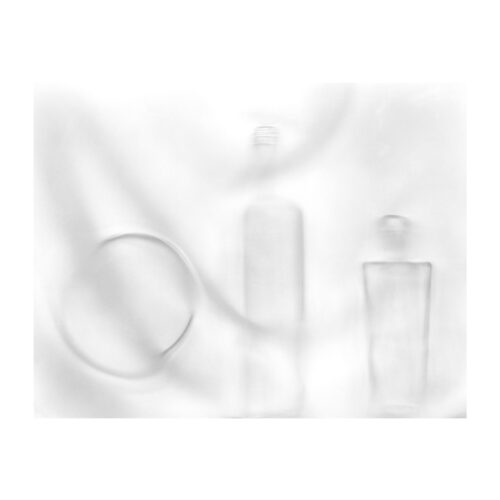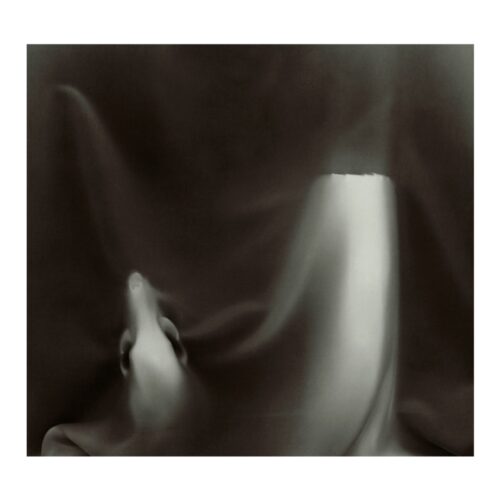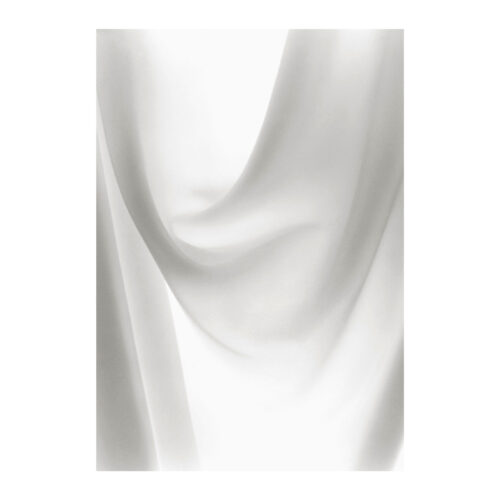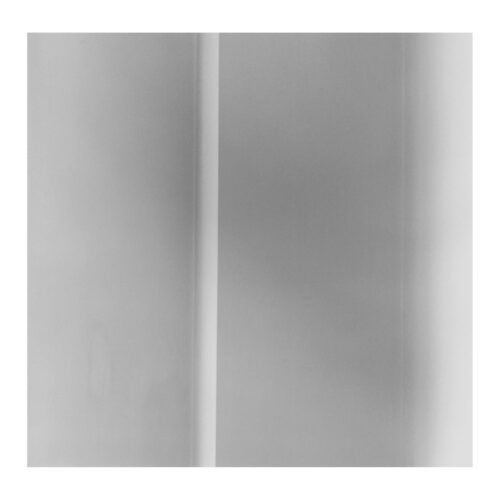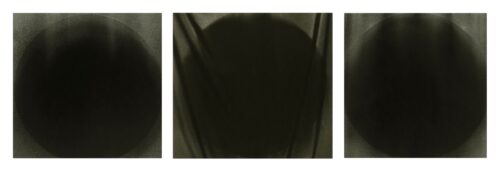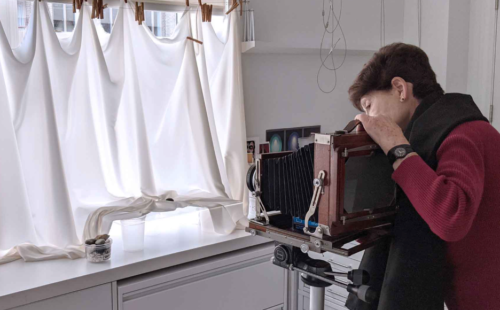Although photographer Lynn Stern does not use the medium of painting to create, Stern and her photography are very much in conversation with the painter’s psyche—she thinks like a painter and her photography captures much of the texture, details, contrast, and vibrancy of painting. Contrary to conventional definitions of photography, Stern does not believe that photography is a medium of documentation, but rather a medium of light. Painters like Ad Reinhardt have been incredibly influential in the evolution of Stern’s practice. Reinhardt, who was renowned for his “black” or “ultimate” paintings, believed in the philosophy of Art-as-Art which fiercely defended the somewhat idiosyncratic abstract work that he and his colleagues produced. Reinhardt has served as a great inspiration for Stern, particularly his view that “What is not there is more important than what is there.” These seminal words have served as the point de base for Stern’s creative vision and work. In Stern’s series Quickening (2013) she masterfully captures this ethos of “What is not there is more important than what is there.”
Quickening (2013) displays different geometric shapes that radiate an airy light that softly shrouds the shapes laid out in the picture. The light that works itself around the shapes, which is seemingly invisible, seems to be more important than the shapes themselves, hence Reinhardt’s philosophy. Stern states, “In Quickening… the sense of movement tends to be between the objects rather than within them. This is due largely to the manipulation of the translucent scrim into gestural folds of light and shadow, resulting in a more dramatic quality of luminosity.”
This philosophy can be further found in other works by Stern, particularly in Animus (1995–1998). Her masterful rendering of animal skulls aims to treat the skull as: “A psychological force rather than a traditional symbol of death: to make it less literal. Toward this end, I distorted and abstracted it by combining different upper and lower parts of a single skull, or, more radically, combining parts of different animal – and occasionally animal and human – skulls. The skulls are juxtaposed with circular and vertical solid forms, and all are placed behind the translucent fabric rather than in front of it.” (Stern)
The kind of ethereal quality that this work emits is both stunning and graceful. Stern states, “Both skulls and forms seem to emerge from, or merge with, the fabric. There is no clear narrative in this work: rather, the images feel like dreams.” In the absence of any clear narrative or subject, the ethereal movements of fabric that dance across the surface of the image become the center of Stern’s work.
As a kind of extension to Quickening, Force Field (2019) includes glass cubes in the prints. Stern states, “I placed them upside down to soften the upper edge, and loved the evanescent shadows this created in the denser glass of the base.” She also “framed themmore tightly than in Quickening, and the forms are more densely juxtaposed; the resulting feeling is of one unit, charged with light and energy.” This juxtaposition adds more vibrancy to the prints and emits the feeling of duality between one shape in contrast to the next, between light and dark.
Stern’s Passage series (2002 – 2004) delves further into the white tonal quality. Stern states, “The initial photographs possessed a greater sense of depth than the earlier work; either the entire image or forms within it pulled the eye back in space, a feeling I tried to sustain throughout the body of work.” Stern’s “Passage” works exhibit much more of a spatial, dimensional quality. The draping fabric obscures and bends the light that runs through the print which creates a sense of disparateness. The drapes also exhibit a kind of regal quality—almost as if they are close-ups of Roman statues or tunics. The lack of clarity as to what or who the subject is—as is the case for most of her works—leaves the door open for interpretation.
The first instance in which Stern uses a scrim of translucent white fabric is in her work titled Unveilings (1985), which captures flowers set against a white backdrop. Stern states: “The aim, however, was not to focus on the flowers against a static backdrop, but to create a dialogue between figure and ground. The fabric was pulled, pinned, taped and otherwise manipulated until its folds created a dynamic – what I call ‘charged’ – composition in light and shadow; one of several anemones was then selected based on whether it looked like it would work with the dynamics of that composition in terms of the curvature of the stem, the openness of the petals, their translucency or lack thereof, and so on.”
The juxtaposition between the translucent petals and the white backdrop indeed initiates a kind of dialogue between figure and ground. The veils of light that gently filter through the petals give the flower a dynamic appearance rather than a static one; her renderings remind you that the flowers are living but they, like most of life, are vulnerable.
In a less natural rendering, Stern also expresses architectural spaces in her work Interior Light (1978 – 1984). In this series, Stern states, “The interior spaces in this series are not the actual subject of the images; rather, the architectural planes and forms are the vehicles by which the light is made palpable.” The light, or that which is invisible, becomes the subject of Stern’s work. She states, “The aim here was also in the sense of an internal vibration.” This three-dimensional spatial movement creates a sense of great entropy. Filling the pages of Stern’s work exists a kind of experiment with light and movement—a contest between moving and static energies.
On the opposite end of the tonal spectrum, Stern has also rendered her abstract vision through dark forms as displayed in Meditation Triptychs (2013-2016). Reinhardt’s influence can be felt strongly in this series as the light that encircles the center of the work becomes the epicenter that grounds her work. Almost harkening back to Baroque artist Caravaggio and his masterful contrast between light and dark that he uses in his paintings, Stern utilizes this same contrast to render her unique work.
Stern states, “The intention was to make all the images feel contemplative and other-worldly, containing almost no incident whatsoever except for the emanation of light surrounding and impinging on the circles.” Stern states, “Frequently, however, out of frustration at not being able to get an image with any life to it, I would start manipulating the black scrim, pinning, taping and weighing it down, until sometimes the slashing diagonal folds would create a charged sense of drama.” “The dynamic, tension-filled image in the center, flanked by quietly radiant works right and left seemed to be metaphors for the difficulty of meditating; hence the title.”
In a world so often characterized by disorder, it seems fitting that Stern’s metaphorical photographs seem to capture the difficulty of mediating—of walking and balancing along a tightrope through an unpredictable and unsteady world. Her work is not always easily recognizable on its surface level, but upon a deeper examination and visual analysis it becomes clear that her work captures the essence of our unmediated world through light.
Stern’s work also has great historical importance and examples of the work can be found in the permanent collections of some of the most important Museums in the US including The Whitney Museum of American Art in New York, Los Angeles County Museum of Art in Los Angeles, The Museum of Fine Arts in Houston Texas, The Brooklyn Museum of Art in Brooklyn, NY, Yale University, New Haven, CT among others.
Her work is represented by Nailya Alexander Gallery in New York City and The Erin Cluley Gallery in Dallas Texas. One of her works is currently being featured in a group show at The Erin Cluley Gallery entitled “Summer 2023” which runs from July 15 – August 19, 2023.
For more information and updates about Lynn’s work you can follow her work on Instagram at https://www.instagram.com/lynnsternphotographs/, or see more of her work at http://lynnsternphotographs.com
For interest in individual available works you can contact one of her galleries by going to the links below. Erin Cluley Gallery, Dallas, Texas, https://www.erincluley.com/lynn-stern-1, Nailya Alexander Gallery, New York, NY, https://www.nailyaalexandergallery.com/artists/lynn-stern
